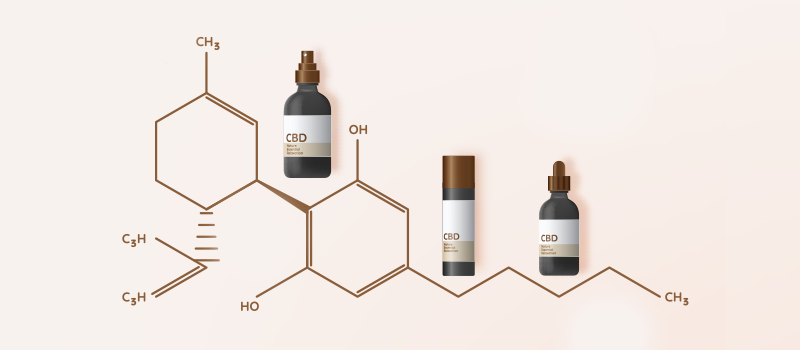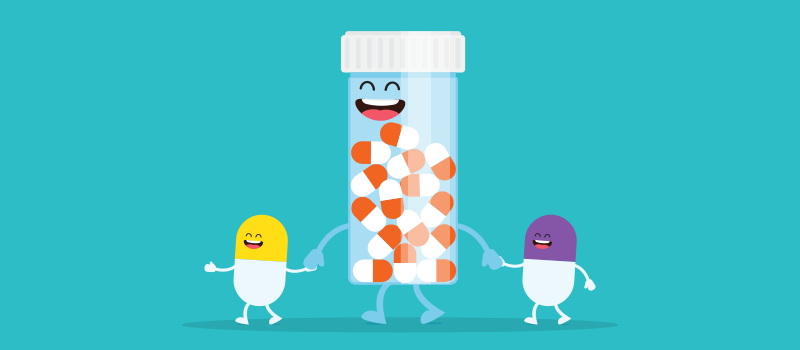What’s the Buzz
The Bee Healthy Blog
How to Treat Chronic Pain vs. Acute Pain

Pain is an uncomfortable, unpleasant feeling, but pain signals are your body’s way of telling you that something is wrong. There are two types of pain - acute and chronic. Acute pain begins suddenly and goes away when the underlying cause is no longer present. Chronic pain is an ongoing pain that lasts longer than six months and can continue even after the cause has been treated. Please continue reading to learn more about how acute and chronic pain is treated.
What’s the difference between acute pain and chronic pain?
As mentioned above, acute pain typically develops suddenly or quickly. There is a specific cause for acute pain. It tends to be sharp and usually lasts a few days or weeks, but no longer than six months. Acute pain goes away when the underlying cause or disease state has been treated. Examples include pain following surgery, pain from a broken bone, pain from cuts or burns, pain after dental work, and pain during childbirth.
Chronic pain is defined as pain lasting longer than six months. It can be dull and aching and may come and go. Chronic pain can continue even after an injury has healed or an illness has been treated. Sometimes, it can be hard to identify the cause of chronic pain. Some people suffer from chronic pain without any specific past injury or health condition. Examples of chronic pain include back pain, headache, arthritis, fibromyalgia, nerve pain due to nerve damage, and pain related to cancer. Chronic pain can lead to additional physical symptoms such as tense muscles, limited mobility, poor energy levels, and changes in appetite. It can also cause emotional disturbances like anxiety, depression, anger, and fear of re-injury.
Untreated pain can affect all aspects of your life, including limiting your ability to work or enjoy leisure activities. Doctors can use various pain management treatment options to provide safe and effective pain relief.
Are acute pain and chronic pain treated differently?
Each person’s pain is unique. Doctors treat pain based on various factors, such as the cause, intensity (mild, moderate, or severe), duration (how long it’s been going on), nature (sharp vs. dull and constant vs. episodic), and what makes the pain worse or better. That’s why the best treatment for your pain could be very different from what has worked for a friend or family member. You should give your health professional all the information you can think of regarding your pain so that they can work with you to find the best pain solutions.
How is acute and chronic pain treated?
One of the most common options for treating pain is medication. Other treatment options for pain management include physical therapy and rehabilitation, injections, nerve blocks, electrical stimulation, biofeedback, acupuncture, psychotherapy or behavioral modification, and relaxation training.
How do you treat acute pain?
Acute pain can be managed effectively with medication. This is because there is a known cause for the pain, and it is of limited duration. Medications used to treat pain include over-the-counter pain relievers such as acetaminophen (Tylenol) and non-steroidal anti-inflammatory drugs like aspirin, ibuprofen (Advil, Motrin), and naproxen (Naprosyn). Sometimes, stronger prescription pain medications are required, such as opioids (Percocet, Vicodin, OxyContin, morphine, fentanyl, and others). It is important to note that this last group of drugs has a high risk of addiction and should be prescribed by your doctor for a specific duration. Pain treatment with medication is available in the form of pills, shots, sprays, and lotions.
Besides painkillers, other medications are also used for pain management, such as anesthetics, muscle relaxers, and antidepressants. Your doctor will consider various factors before deciding what medication(s) could help your pain.
What is the best way to treat chronic pain?
Chronic pain can be treated with medications just like acute pain. In addition, people who suffer from severe chronic pain may be candidates for trigger point injections directly into the affected area. These injections contain a mixture of anesthetics and steroids that help to alleviate pain, treat inflammation, relieve joint stiffness, and relax tense muscles. Epidural injections can be given around the spinal cord.
Besides medications, chronic pain can benefit from a range of treatment modalities and lifestyle modifications, such as:
Physical and occupational therapy
Therapists can help you progress in your recovery after an injury, broken bones, or surgery. Physical therapy helps you focus on the specific muscles that need to be stretched and strengthened during recovery. Occupational therapy helps you do specific tasks of daily living with less pain, such as walking, climbing stairs, getting in and out of cars, or opening jars.
Pain management devices
A TENS unit sends electrical signals to the area where you have pain and blocks pain signals to the nervous system. It may be helpful for some types of pain. Ultrasound waves can also offer pain relief to some people. An implantable spinal cord stimulator delivers a low-voltage electric current to block pain.
Psychotherapy and counseling
Long-lasting pain can have an effect on your mental health. Seeing a counselor can be useful for coping with the emotional effects of long-lasting pain. Modalities like cognitive behavioral therapy can help you feel more like yourself again as you work with your other doctors to find solutions for your pain issues.
Massage and relaxation therapies
Massage, meditation, and relaxation can help people with chronic pain by relieving muscle tension. Breathing exercises, stretching, music, and art therapy are also effective techniques to relax the body and better manage pain.
Complementary and integrative health
Some patients benefit from complementary treatments such as biofeedback, acupuncture, and chiropractic spinal manipulations performed by trained practitioners. These treatments can help train your body to respond to pain differently, streamline your inner energy, and make adjustments in your body to have less pain.
The Takeaway
The main difference between acute and chronic pain types is that acute pain is short-lived and usually has a known and treatable cause, whereas chronic pain is long-lasting and may not have a known cause. Pain is considered chronic if it has lasted for longer than 6 months.
There are several good options for treating both acute and chronic pain. Medications are helpful in most cases, but it’s worth talking to your doctor about other pain relief methods. For many people, a combination of several techniques often provides more effective pain relief than just one treatment.
References:
1. https://my.clevelandclinic.org/health/articles/12051-acute-vs-chronic-pain
2. https://www.pbmchealth.org/news-events/blog/chronic-vs-acute-pain












SOCIAL